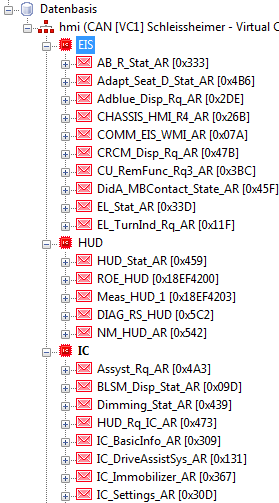One of the central features of CAN buses is the lack of device or system addresses. In contrast to most other network systems, ECUs on a CAN bus do not have unique addresses. Communication control is therefore regulated via the messages’ unique identification numbers (IDs):
•In contrast to most other network systems, ECUs on a CAN bus do not have unique address •Communication control is therefore regulated via the message's unique identification numbers (IDs) •Based on the identifier, the receiver decides whether a message is relevant or not. •At the same time, the identifier is used to prioritize messages (Because of the Wired-AND design lower IDs are dominant on the bus). •If an ECU cannot send its ID onto the bus a collision has been detected and the ECU has to stop sending any data for this massage (Bus Arbitration) •Though there can be several receivers to an identifier, there can always be only one sender. •Standard CAN provides up to 2.048 unique identifiers; extended CAN provides up to 536.870.912 unique identifiers. •The complete data transfer of all ECUs within a vehicle is described in the entirety of used identifiers. |
|
CAN buses use two identifier formats:
•11-bit identifier or base frame format.
•29-bit identifier or extended frame format.
